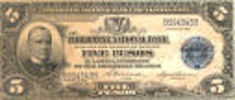The Spanish navigator Ferdinand Magellan landed in the Philippines in 1521. The Philippines was established as a Spanish colony in 1539. In the late 1800s, European-educated sons of wealthy landholders advocated nationalistic ideals that led to an 1896 insurrection that was put down by Spanish troops. Spain ceded the islands to United States after the U.S. Navy defeated the Spanish navy in the Spanish-American War of 1898. The Philippines became a United States territory on August 13, 1898 and a Commonwealth on November 15, 1935. The Japanese occupied most of the Philippines from January 3, 1942 until October 14, 1943. The Philippines formally gained its independence on July 4, 1946.
Small gold coins known as piloncitos were issued in the Philippines in the thirteenth century. In 1522 the Spanish founded Manila and it quickly became the major port for Spain's trade with eastern Asia. Until 1820, silver flowed in from American mines to pay for Asian goods, providing an ample supply of currency for the Philipines and other parts of Asia. When Latin Americcan countries gained their independence in the 1820s, the Spanish lost their supply of silver and silver coins had to be minted in the Philippines. In 1861 the silver dollars were minted in Madrid and were decimalized so 1 Peso was equal to 100 centimos rather than 8 reales.
The Philippines used the Spanish monetary system, based on the Real (XESE), while it was a Spanish colony. Some coins were minted locally, and other coins from Mexico and Peru were overstamped in the Philippines. Spain introduced the Peso Fuerte (PHF) into the Philippines on July 1, 1857. Spain introduced the Escudo (PHE) in 1871, the Peseta (PHT) in 1872, and the Peso (PHP) again in 1876. Although Spain introduced several different versions of their currency during this period of time, these changes had no direct impact on the Philippines since no coins were issued in the Philippines between 1868 and 1880. These denominations were, at best, used as units of account. The Peso (PHP) was adopted by the United States after the Philippines became a territory of the United States with 1 Dollar equal to 2 Pesos and divisible into 100 Centavos.
During World War II, the Japanese issued Military Gumpyo Pesos (PHJ) at par with the Philippine Peso which continued to circulate; however, Philippine forces had withdrawn into the jungle, and issued their own Guerilla Pesos (PHG), redeemable in paper Pesos after the war was over. The Japanese made use of the Guerilla Pesos punishable by death, but since this would have led to the collapse of the Philippine economy, local Japanese authorities acquiesced and often allowed the Guerilla Pesos to circulate. During the war, the Japanese Military peso depreciated relative to the Commonwealth Peso with the conversion rate declining from 1.25 PHJ = 1 PHP by May 15, 1943 to 1.44:1 in June 1943, 20:1 in July 1944 and 120:1 in January 1945. The Ballantyne Scale was adopted by the Congress of the Philippines in 1945 to calculate these conversion rates.
After World War II, the Philippines gained its independence and adopted the Peso after gaining independence. The Piso replaced the Peso in 1962, and is divisible into 100 Sentimos (Centavos).
From 1903 until 1948, the Treasury issued banknotes with 100% cover in U.S. Dollars, as well as by the Bank of the Philippine Islands and the Philippine National Bank. The Central Bank of the Philippines was created on June 15, 1948, and it became the sole note issuing authority in January 1949.


